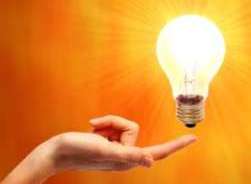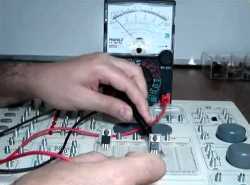When plasma electricity generators become reality
 Almost everyone who was interested in energy heard about the prospects of MHD generators. But the fact that these generators have been in the status of promising for more than 50 years is known to few. The problems associated with plasma MHD generators are described in the article.
Almost everyone who was interested in energy heard about the prospects of MHD generators. But the fact that these generators have been in the status of promising for more than 50 years is known to few. The problems associated with plasma MHD generators are described in the article.
The story with plasma or magnetohydrodynamic (MHD) generators is surprisingly similar to the situation with thermonuclear fusion.
It seems that you need to take only one step or make a little effort, and the direct conversion of heat into electrical energy will become a familiar reality. But another problem pushes this reality indefinitely. First of all, about the terminology. Plasma generators are one of the varieties of MHD generators. And those, in turn, got their name by the effect of the appearance of an electric current ...
Wireless power transmission: a difficult history of becoming
 Of the long list of fantastic technical ideas implemented today, only the dream of wireless transmission of electrical energy continues to remain unassailable. Detailed descriptions of energy rays in science fiction novels tease engineers with their obvious need, and at the same time the practical impossibility of implementation. But the situation is gradually changing for the better. From the very beginning of the discovery of electricity, there was a problem of its transmission to the final consumer.
Of the long list of fantastic technical ideas implemented today, only the dream of wireless transmission of electrical energy continues to remain unassailable. Detailed descriptions of energy rays in science fiction novels tease engineers with their obvious need, and at the same time the practical impossibility of implementation. But the situation is gradually changing for the better. From the very beginning of the discovery of electricity, there was a problem of its transmission to the final consumer.
The development of industrial production has led to a sharp increase in demand for electricity. Wires and poles of electric transmission lines have become an integral element of landscapes. But only specialists know how much money and effort is spent on maintaining these lines in working condition, and how much energy is lost in them. Fossil resources are gradually running out ...
The many faces of the microwave: cooks, radiates ... myths
 The article discusses the design of the microwave oven and the mechanisms of heating food. The complete inconsistency of rumors about the harmful effects of microwaves on humans and products is shown.
The article discusses the design of the microwave oven and the mechanisms of heating food. The complete inconsistency of rumors about the harmful effects of microwaves on humans and products is shown.
Microwave ovens, or microwaves, quickly entered our everyday life. The hostesses quickly appreciated their convenience - a few tens of seconds, and warmed dishes can be served on the table. Culinary recipes, and even books focused on the use of a microwave oven, have become an exchange currency among home-cooks.
Immediately there were rumors about the extreme harmfulness of microwave ovens for food and housewives. The remedy was found almost immediately: “tested” on computer and TV monitors, cacti and other prickly representatives of the home flora migrated to the kitchens, protecting their housewives from the harmful effects of the new “miracle” of household appliances ...
 With the use of wind energy, mankind has been familiar from time immemorial. Once an unknown inventor adjusted the sail to an unpretentious floating vessel, and with its help, centuries later, the entire Earth was examined by inquisitive navigators. Windmills, even in our time in many countries, regularly serve man.
With the use of wind energy, mankind has been familiar from time immemorial. Once an unknown inventor adjusted the sail to an unpretentious floating vessel, and with its help, centuries later, the entire Earth was examined by inquisitive navigators. Windmills, even in our time in many countries, regularly serve man.
But today, the use of wind implies, above all, the generation of electricity. Let's try to figure out how simple, cheap and convenient it is. For those who want to immediately hear the result, the conclusion: wind power will never be cheaper than energy received from other sources: thermal, nuclear or hydroelectric power plants.
Therefore, it makes sense to engage in wind power plants for the home only to those who have itchy hands to adapt a ready-made generator they got "on occasion", or to enthusiasts of clean energy who are fanatically wanting ...
Thermonuclear energy: state and prospects
 The article discusses the reasons why, until now, controlled thermonuclear fusion has not found industrial application.
The article discusses the reasons why, until now, controlled thermonuclear fusion has not found industrial application.
When powerful explosions of thermonuclear bombs shocked the Earth in the fifties of the last century, it seemed that very few were left before the peaceful use of nuclear fusion energy: one or two decades. There were reasons for such optimism: only 10 years passed from the moment the atomic bomb was used until the creation of the reactor that generated electricity.
But the task of curbing thermonuclear fusion was unusually complex. Decades passed one after another, and access to unlimited energy reserves was never obtained. During this time, humanity, burning fossil resources, polluted the atmosphere with emissions and overheated it with greenhouse gases. The disasters in Chernobyl and Fukushima-1 discredited nuclear energy. What prevented us from mastering such a promising and safe process ...
M.O. Dolivo-Dobrovolsky - Russian innovator-electrician and his inventions
 A talented Russian engineer and inventor Mikhail Osipovich Dolivo-Dobrovolsky is considered one of the founders of the technique of applying alternating currents. His name is associated with work in the field of creating the technique of three-phase alternating currents. He is the creator of a simple and reliable asynchronous motor to use. An engine of this design is used today. All elements of the three-phase system were created by Dolivo-Dobrovolsky.
A talented Russian engineer and inventor Mikhail Osipovich Dolivo-Dobrovolsky is considered one of the founders of the technique of applying alternating currents. His name is associated with work in the field of creating the technique of three-phase alternating currents. He is the creator of a simple and reliable asynchronous motor to use. An engine of this design is used today. All elements of the three-phase system were created by Dolivo-Dobrovolsky.
Mikhail Osipovich was born on January 2, 1862 in the family of an official. He became the firstborn in a large family Dolivo-Dobrovolsky, who at that time lived in the city of Gatchina. In 1873, the Dolivo-Dobrovolsky family moved to Odessa, where the childhood and youth of the future talented inventor passed. There, in Odessa, he brilliantly graduated from the Odessa Real School. Then he entered the Riga Polytechnic Institute. But Mikhail Osipovich did not have time to finish it ...
Transistors: purpose, device and principles of operation
 The transistor did not immediately receive such a familiar name. Initially, by analogy with lamp technology, it was called a semiconductor triode. The modern name consists of two words. The first word is “transfer” (here, I immediately recall “transformer”) means a transmitter, converter, and carrier. And the second half of the word resembles the word "resistor" - a detail of electrical circuits, the main property of which is electrical resistance.
The transistor did not immediately receive such a familiar name. Initially, by analogy with lamp technology, it was called a semiconductor triode. The modern name consists of two words. The first word is “transfer” (here, I immediately recall “transformer”) means a transmitter, converter, and carrier. And the second half of the word resembles the word "resistor" - a detail of electrical circuits, the main property of which is electrical resistance.
It is this resistance that occurs in Ohm's law and many other formulas of electrical engineering. Therefore, the word "transistor" can be interpreted as a resistance converter. About the same as in hydraulics, the change in fluid flow is controlled by a valve. For a transistor, such a “valve” changes the amount of electric charges that create an electric current. This change is nothing but a change in the internal resistance of a semiconductor device ...
 One of the significant inventions of the XX century is considered to be the invention of the transistor, which came to replace electronic tubes.
One of the significant inventions of the XX century is considered to be the invention of the transistor, which came to replace electronic tubes.
For a long time, lamps were the only active component of all electronic devices, although they had many shortcomings. First of all, it is a large power consumption, large dimensions, short life and low mechanical strength. These shortcomings were felt more and more sharply with the improvement and sophistication of electronic equipment.
A revolutionary revolution in radio engineering took place when outdated lamps were replaced by semiconductor amplifying devices - transistors, devoid of all the mentioned disadvantages. The first operational transistor was born in 1947, thanks to the efforts of employees of the American company Bell Telephone Laboratories.Their names are now known throughout the world. These are scientists - physicists W. Shockley, D. Bardin and W. Brighten ...
